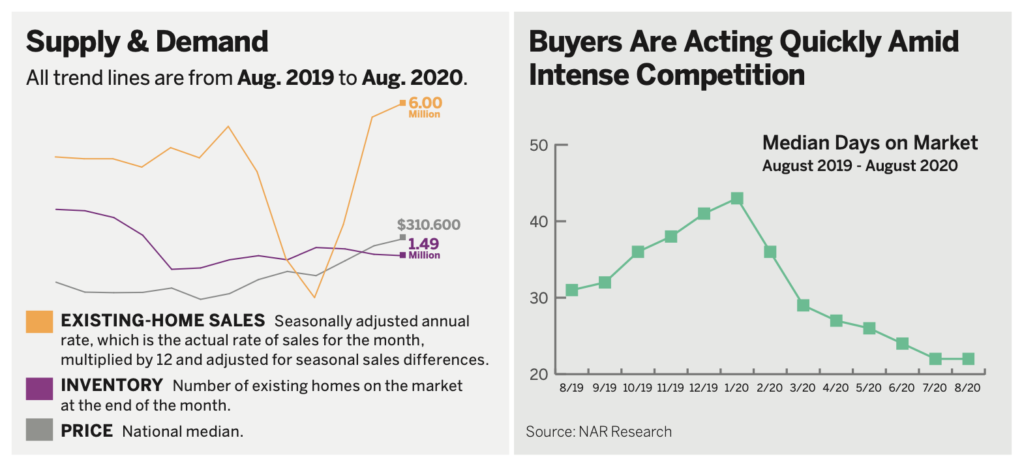
by Lawrence Yun, National Association of REALTORS®
Remarkably, in the midst of a pandemic, the housing market is in a clear V-shaped recovery. Sales for both existing and new homes in August hit their highest mark since 2006. The data popped out as round numbers: existing-home sales at an even 6 million and new-home sales at exactly 1 million on an annualized basis, up 10.5% and 43.2% from a year ago. Pending contracts also hit an all-time high.
Buyer activity this winter is unlikely to chill: Mortgage applications for home purchases are up about 30% compared to a year ago. Due to the extraordinary demand, home prices have reached an all-time high. The national median home price was $310,600 in August, up 11.4% from a year earlier. The strong price run-up is partly due to a latent boom in the luxury market and to a jump in multiple offers for starter homes. While those situations result in multiple “losers,” buyers are persevering. They aim to take advantage of record-low mortgage rates.
Such a frenzy of activity, reminiscent of 2006, raises questions about a bubble and the potential for a painful crash. The answer: There’s no comparison. Back in 2006, dubious adjustable-rate mortgages taxed many buyers’ budgets. Some loans didn’t even require income documentation. Today, buyers are taking out 30-year fixed-rate mortgages. Fourteen years ago, there were 3.8 million homes listed for sale, and home builders were putting up about 2 million new units. Now, inventory is only about 1.5 million homes, and home builders are underproducing relative to historical averages.
But let’s look at current trends through a different lens. Escalating home prices will soon cause damage of a different sort, shutting out first-time buyers. That’s why more supply is critical. Only when home prices rise roughly in line with income growth can we say that the market is in equilibrium. Perhaps as people continue to flee crowded cities, new construction will get a boost. Greater flexibility to work from anywhere and improved broadband access in rural areas could spur home buying in remote areas, a market trend to watch for in the years ahead.
What’s Behind the Record-Low Days on Market
Demand for homes is outpacing supply. During July and August, half of all listed properties sold within 22 days, down from 31 days a year earlier. Nearly 70% of listings went under contract in less than a month.

— Reprinted from REALTOR® Magazine Online, November 2020, with permission of the National Association of REALTORS®. Copyright 2020. All rights reserved.





